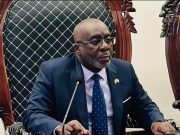Mining executives have raised concern about the increase in electricity tariffs to USc12.21/ kWh with an analysis of survey data by the Chamber of Mines of Zimbabwe showing that the proportion of electricity costs to the total cost of production will increase by an average of 42%.
Speaking during the State of the Mining Industry report breakfast held in the capital today senior Research Fellow at Zimbabwe Economic Policy Analysis and Research Unit Professor Albert Makochekanwa said mining executives indicated that the increase in electricity costs will consume on average 20% of mining companies’ stay in business capital budgets which are largely funded from retained earnings.
“Prospects for mineral output growth for 2023 are generally lower than those recorded in 2022. Key risks to the outlook for 2023 include fragile power supply, high costs, foreign currency shortages, an unstable tax framework, and capital shortages.
“From the survey data, the average level of optimal tariff increase was 4%, equivalent to a tariff increase to USc10.2/kWh.
“Survey findings show that electricity consumption is expected to increase by 20% in 2023, while diesel consumption is expected to increase by 39% in 2023.
“Most respondents cited ongoing capital projects as the major drivers of energy usage in 2023.
“Mining executives, however, are expecting the energy situation to remain depressed in 2023,” he said.
The Zimbabwe Energy Transmission and Distribution Company (ZETDC) acting managing director Engineer Howard Choga said the company is facing a number of challenges to secure enough power.
“The maximum demand for this year was 1850 megawatts in winter, that’s the winter peak for the demand curve for the year. We actually could supply an average of 1400 megawatts which also includes imports of 300 megawatts and then we would share the difference. So load-shedding has been with us for a long time because we have not been able to generate enough and also access imports enough.
“At the moment we are sitting on capacity in the region which we have secured through power purchase agreements that we have not been able to access because our cashflows are not capable of us getting that.
“So we need a lot of support for us to be able to mitigate the negative impacts of load shedding in this country. When we look at growth, one of the issues that were mentioned in the report, the mining industry expects to grow by 20%.
” My expectation is that this growth is organic growth which means that it’s growth through additional utilisation of electricity by existing mining infrastructure. In the medium term, that’s within the NDS1 , the applications we have received as ZESA in terms of prospective new projects and growth prospects, especially in mining, stands at 2350 megawatts,” he said.
Meanwhile, the Chamber of Mines of Zimbabwe president Collin Chibafa called for an affordable tariff that will help reduce the sector’s cost of production.
“As the industry, we will struggle to accept the increase, because it is not fair, if you look at the mining sector, we surrender 40% of our foreign currency to the Reserve Bank and we are left with 60% . So we are calling for a tariff that is affordable for our sector,” he said.
According to the report, mining costs are projected to increase by 15% in 2023, with energy being the main driver.













